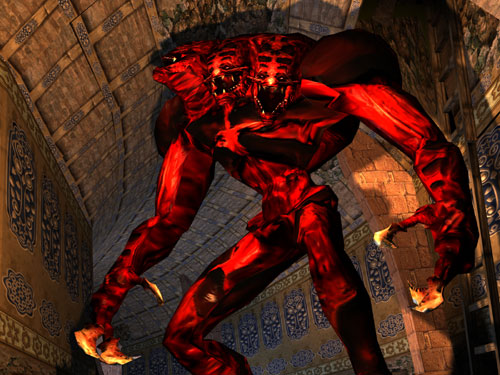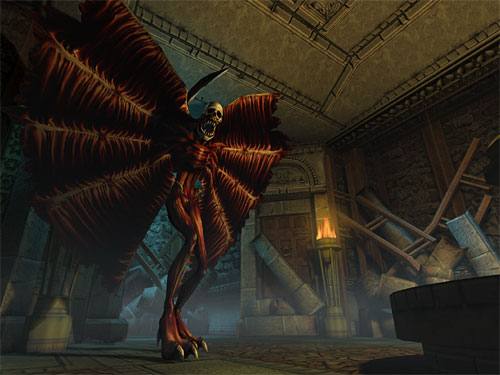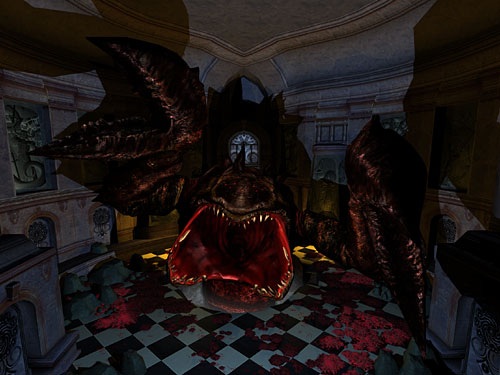Установить приложение
Как установить приложение на iOS
Следуйте инструкциям в видео ниже, чтобы узнать, как установить наш сайт как веб-приложение на главный экран вашего устройства.
Примечание: Эта функция может быть недоступна в некоторых браузерах.
Вы используете устаревший браузер. Этот и другие сайты могут отображаться в нем неправильно.
Необходимо обновить браузер или попробовать использовать другой.
Необходимо обновить браузер или попробовать использовать другой.
Switch Nintendo Switch
- Автор темы dimm
- Дата начала
dimm
Администратор
- Регистрация
- 10 Июн 2007
- Сообщения
- 31.148
- Реакции
- 9.734
Про это еще в августе говорили, но я так и не понял, где там "подтверждение" =) На сайте игры лого Свища нет:Дрэгон Квэси XI будет на Свитче.
http://www.dq11.jp/
Может просто презентухи в январе ждут.
Кому-то делать нехрен:

- Регистрация
- 21 Дек 2005
- Сообщения
- 25.567
- Реакции
- 3.882
Упустил этот момент. Если выйдет на Свитче, значит куплю на него, а не на 3дс. Хотя смотря какая цена будетПро это еще в августе говорили
- Регистрация
- 15 Сен 2007
- Сообщения
- 19.785
- Реакции
- 4.000
Всё очень плёхо :nailbiting:
Clock-speeds are a crucial piece of information required to get some idea of Switch's capabilities beyond the physical make-up of the Tegra processor. As many have speculated, the new Nintendo hardware does indeed feature two performance configurations - and the console is categorically not as capable in mobile form, compared to its prowess when docked and attached to an HDTV. And we can confirm that there is no second GPU or additional hardware in the dock itself regardless of the intriguing patents that Nintendo has filed suggesting that there might be. With battery life and power throughput no longer an issue, the docked Switch simply allows the GPU to run much faster. And to put it simply, there is a night and day difference here.
Where Switch remains consistent is in CPU power - the cores run at 1020MHz regardless of whether the machine is docked or undocked. This ensures that running game logic won't be compromised while gaming on the go: the game simulation itself will remain entirely consistent. The machine's embedded memory controller runs at 1600MHz while docked (on par with a standard Tegra X1), but the default power mode undocked sees this drop to 1331MHz. However, developers can opt to retain full memory bandwidth in their titles should they choose to do so.
As things stand, CPU clocks are halved compared to the standard Tegra X1, but it's the GPU aspect of the equation that will prove more controversial. Even while docked, Switch doesn't run at Tegra X1's full potential. Clock-speeds are locked here at 768MHz, considerably lower than the 1GHz found in Shield Android TV, but the big surprise from our perspective was the extent to which Nintendo has down-clocked the GPU to hit its thermal and battery life targets. That's not a typo: it really is 307.2MHz - meaning that in portable mode, Switch runs at exactly 40 per cent of the clock-speed of the fully docked device. And yes, the table below does indeed confirm that developers can choose to hobble Switch performance when plugged in to match the handheld profile should they so choose.
More:
http://www.eurogamer.net/articles/di...-spec-analysis
- Регистрация
- 21 Дек 2005
- Сообщения
- 25.567
- Реакции
- 3.882
А для нубов расшифроватьВсё очень плёхо :nailbiting:
- Регистрация
- 15 Сен 2007
- Сообщения
- 19.785
- Реакции
- 4.000
В портативном режиме почти как Вию, а в док-станции <1/3 от хуанаА для нубов расшифровать
- Регистрация
- 21 Дек 2005
- Сообщения
- 25.567
- Реакции
- 3.882
Скорее всего так и будет. Поскольку я рассматриваю Свитч как портативку, то мощность нормальная.В портативном режиме почти как Вию, а в док-станции <1/3 от хуанаНу это пока слухи.
- Регистрация
- 15 Сен 2007
- Сообщения
- 19.785
- Реакции
- 4.000
Где ж нормальная, если опять WiiU перевыпускают?Поскольку я рассматриваю Свитч как портативку, то мощность нормальная.
- Регистрация
- 21 Дек 2005
- Сообщения
- 25.567
- Реакции
- 3.882
Это портативка мощностью с вию. Остается вопрос по играм. Если смотреть как стационар, то слабо. Но соревноваться сейчас в стационаре глупо, надо ждать пс5 и вместе с ней стартовать.Где ж нормальная, если опять WiiU перевыпускают?
dimm
Администратор
- Регистрация
- 10 Июн 2007
- Сообщения
- 31.148
- Реакции
- 9.734
Курите. Разбор статьи на DF:
CPU Clock
This isn't really surprising, given (as predicted) CPU clocks stay the same between portable and docked mode to make sure games don't suddenly become CPU limited when running in portable mode.
The overall performance really depends on the core configuration. An octo-core A72 setup at 1GHz would be pretty damn close to PS4's 1.6GHZ 8-core Jaguar CPU. I don't necessarily expect that, but a 4x A72 + 4x A53 @ 1GHz should certainly be able to provide "good enough" performance for ports, and wouldn't be at all unreasonable to expect.
Memory Clock
This is also pretty much as expected as 1.6GHz is pretty much the standard LPDDR4 clock speed (which I guess confirms LPDDR4, not that there was a huge amount of doubt). Clocking down in portable mode is sensible, as lower resolution means smaller framebuffers means less bandwidth needed, so they can squeeze out a bit of extra battery life by cutting it down.
Again, though, the clock speed is only one factor. There are two other things that can come into play here. The second factor, obviously enough, is the bus width of the memory. Basically, you're either looking at a 64 bit bus, for 25.6GB/s, or a 128 bit bus, for 51.2GB/s of bandwidth. The third is any embedded memory pools or cache that are on-die with the CPU and GPU. Nintendo hasn't shied away from large embedded memory pools or cache before (just look at the Wii U's CPU, its GPU, the 3DS SoC, the n3DS SoC, etc., etc.), so it would be quite out of character for them to avoid such customisations this time around. Nvidia's GPU architectures from Maxwell onwards use tile-based rendering, which allows them to use on-die caches to reduce main memory bandwidth consumption, which ties in quite well with Nintendo's habits in this regard. Something like a 4MB L3 victim cache (similar to what Apple uses on their A-series SoCs) could potentially reduce bandwidth requirements by quite a lot, although it's extremely difficult to quantify the precise benefit.
GPU Clock
This is where things get a lot more interesting. To start off, the relationship between the two clock speeds is pretty much as expected. With a target of 1080p in docked mode and 720p in undocked mode, there's a 2.25x difference in pixels to be rendered, so a 2.5x difference in clock speeds would give developers a roughly equivalent amount of GPU performance per pixel in both modes.
Once more, though, and perhaps most importantly in this case, any interpretation of the clock speeds themselves is entirely dependent on the configuration of the GPU, namely the number of SMs (also ROPs, front-end blocks, etc, but we'll assume that they're kept in sensible ratios).
Case 1: 2 SMs - Docked: 384 GF FP32 / 768 GF FP16 - Portable: 153.6 GF FP32 / 307.2 GF FP16
I had generally been assuming that 2 SMs was the most likely configuration (as, I believe, had most people), simply on the basis of allowing for the smallest possible SoC which could meet Nintendo's performance goals. I'm not quite so sure now, for a number of reasons.
Firstly, if Nintendo were to use these clocks with a 2 SM configuration (assuming 20nm), then why bother with active cooling? The Pixel C runs a passively cooled TX1, and although people will be quick to point out that Pixel C throttles its GPU clocks while running for a prolonged time due to heat output, there are a few things to be aware of with Pixel C. Firstly, there's a quad-core A57 CPU cluster at 1.9GHz running alongside it, which on 20nm will consume a whopping 7.39W when fully clocked. Switch's CPU might be expected to only consume around 1.5W, by comparison. Secondly, although I haven't been able to find any decent analysis of Pixel C's GPU throttling, the mentions of it I have found indicate that, although it does throttle, the drop in performance is relatively small, and as it's clocked about 100MHz above Switch to begin with it may only be throttling down to a 750MHz clock or so even under prolonged workloads. There is of course the fact that Pixel C has an aluminium body to allow for easier thermal dissipation, but it likely would have been cheaper (and mechanically much simpler) for Nintendo to adopt the same approach, rather than active cooling.
Alternatively, we can think of it a different way. If Switch has active cooling, then why clock so low? Again assuming 20nm, we know that a full 1GHz clock shouldn't be a problem for active cooling, even with a very small quiet fan, given the Shield TV (which, again, uses a much more power-hungry CPU than Switch). Furthermore, if they wanted a 2.5x ratio between the two clock speeds, that would give a 400MHz clock in portable mode. We know that the TX1, with 2 SMs on 20nm, consumes 1.51W (GPU only) when clocked at about 500MHz. Even assuming that that's a favourable demo for the TX1, at 20% lower clock speed I would be surprised if a 400MHz 2 SM GPU would consume any more than 1.5W. That's obviously well within the bounds for passive cooling, but even being very conservative with battery consumption it shouldn't be an issue. The savings from going from 400MHz to 300MHz would perhaps only increase battery life by about 5-10% tops, which makes it puzzling why they'd turn down the extra performance.
Finally, the recently published Switch patent application actually explicitly talks about running the fan at a lower RPM while in portable mode, and doesn't even mention the possibility of turning it off while running in portable mode. A 2 SM 20nm Maxwell GPU at ~300MHz shouldn't require a fan at all, and although it's possible that they've changed their mind since filing the patent in June, it begs the question of why they would even consider running the fan in portable mode if their target performance was anywhere near this.
Case 2: 3 SMs - Docked: 576 GF FP32 / 1,152 GF FP16 - Portable: 230.4 GF FP32 / 460.8 GF FP16
This is a bit closer to the performance level we've been led to expect, and it does make a little bit of sense from the perspective of giving a little bit over TX1 performance at lower power consumption. (It also matches reports of overclocked TX1s in early dev kits, as you'd need to clock a bit over the standard 1GHz to reach docked performance here.) Active cooling while docked makes sense for a 3 SM GPU at 768MHz, although wouldn't be needed in portable mode. It still leaves the question of why not use 1GHz/400MHz clocks, as even with 3 SMs they should be able to get by with passive cooling at 400MHz, and battery consumption shouldn't be that much of an issue.
Case 3: 4 SMs - Docked: 768 GF FP32 / 1,536 GF FP16 - Portable: 307.2 GF FP32 / 614.4 GF FP16
This would be on the upper limit of what's been expected, performance wise, and the clock speeds start to make more sense at this point, as portable power consumption for the GPU would be around the 2W mark, so further clock increases may start to effect battery life a bit too much (not that 400-500MHz would be impossible from that point of view, though). Active cooling would be necessary in docked mode, but still shouldn't be needed in portable mode (except perhaps if they go with a beefier CPU config than expected).
Case 4: More than 4 SMs
I'd consider this pretty unlikely, but just from the point of view of "what would you have to do to actually need active cooling in portable mode at these clocks", something like 6 SMs would probably do it (1.15 TF FP32/2.3 TF FP16 docked, 460 GF FP32/920 GF FP16 portable), but I wouldn't count on that. For one, it's well beyond the performance levels that reliable-so-far journalists have told us to expect, but it would also require a much larger die than would be typical for a portable device like this (still much smaller than PS4/XBO SoCs, but that's a very different situation).
Each of these numbers are only a single variable in the equation, and we need to know things like CPU configuration, memory bus width, embedded memory pools, number of GPU SMs, etc. to actually fill out the rest of those equations to get the relevant info. Even on the worst end of the spectrum, we're still getting by far the most ambitious portable that Nintendo's ever released, which also doubles as a home console that's noticeably higher performing than Wii U, which is fine by me.
- Регистрация
- 2 Май 2006
- Сообщения
- 18.490
- Реакции
- 6.671
А можно в двух словах для тех, у кого "7 бед - один ресет" )))Курите. Разбор статьи на DF:
dimm
Администратор
- Регистрация
- 10 Июн 2007
- Сообщения
- 31.148
- Реакции
- 9.734
а там и ответили в конце:А можно в двух словах для тех, у кого "7 бед - один ресет" )))
Even on the worst end of the spectrum, we're still getting by far the most ambitious portable that Nintendo's ever released, which also doubles as a home console that's noticeably higher performing than Wii U, which is fine by me.
- Регистрация
- 2 Май 2006
- Сообщения
- 18.490
- Реакции
- 6.671
Ооо, спасибо, что и требовалось уточнитьа там и ответили в конце:
dimm
Администратор
- Регистрация
- 10 Июн 2007
- Сообщения
- 31.148
- Реакции
- 9.734
Какой-то чувачок решил покопаться в профилях устройств шедших со свежей версией UE4. "Устройства" с кодовыми названиями Wolf, WolfSea и WolfAir были переименованы соответственно в Switch, SwitchConsole and SwitchHandheld =)) Видно, что для свища-портатива и свища-консоли настроечки разные.
Код:
[Switch DeviceProfile]
+CVars=sg.ViewDistanceQuality=2
+CVars=sg.AntiAliasingQuality=2
+CVars=sg.ShadowQuality=2
+CVars=sg.PostProcessQuality=2
+CVars=sg.TextureQuality=2
+CVars=sg.EffectsQuality=2
+CVars=r.ScreenPercentage=100
[SwitchConsole DeviceProfile]
DeviceType=Switch
BaseProfileName=Switch
[SwitchHandheld DeviceProfile]
DeviceType=Switch
BaseProfileName=Switch
+CVars=sg.ViewDistanceQuality=1
+CVars=sg.AntiAliasingQuality=1
+CVars=sg.ShadowQuality=1
+CVars=sg.PostProcessQuality=1
+CVars=sg.TextureQuality=1
+CVars=sg.EffectsQuality=1
+CVars=r.ScreenPercentage=66- Регистрация
- 21 Дек 2005
- Сообщения
- 25.567
- Реакции
- 3.882
Белив от какого-то чувака.
Ace Research Institute analyst Yasuda believes that the system will be Wide Quad High Definition and that the internal bus speed will be 5Gbps. It is also likely that the VR patent that surfaced online a few days ago is simply a patent and won’t be something used at launch.
Ace Research Institute analyst Yasuda believes that the system will be Wide Quad High Definition and that the internal bus speed will be 5Gbps. It is also likely that the VR patent that surfaced online a few days ago is simply a patent and won’t be something used at launch.
Последнее редактирование:
dimm
Администратор
- Регистрация
- 10 Июн 2007
- Сообщения
- 31.148
- Реакции
- 9.734
Это не просто "чувак", это тех-журналист Wall Street Journal =)Белив от какого-то чувака.
Он сам то понял чо сказал? =))) Кстати, уже извинился:Ace Yasuda: Nintendo Switch's resolution not likely 1080 to 720 but WQHD to 1080.
dimm
Администратор
- Регистрация
- 10 Июн 2007
- Сообщения
- 31.148
- Реакции
- 9.734
20 декабря Нины обновили патент на Eternal Darkness. То ли для Gamecube VC, то ли чем черт не шутит для ремастера какого-нибудь:



http://tsdr.uspto.gov/#caseNumber=87274495&caseType=SERIAL_NO&searchType=statusSearch
On December 20, 2016, Nintendo of America Inc. filed in the US via the United States Patent and Trademark Office (USPTO) a trademark application for "Eternal Darkness". The filing basis is 1B (Application based on intent to use), goods and services are related to game programs/software. The application entered the Trademark Reporting and Monitoring System (TRAM) yesterday on December 23, 2016.
Word Mark ETERNAL DARKNESS
Goods and Services IC 009. US 021 023 026 036 038. G & S: Downloadable electronic game programs; downloadable electronic game software; electronic game programs; electronic game software; video game programs; video game software
Standard Characters Claimed
Mark Drawing Code (4) STANDARD CHARACTER MARK
Serial Number 87274495
Filing Date December 20, 2016
Current Basis 1B
Original Filing Basis 1B
Owner (APPLICANT) Nintendo of America Inc. CORPORATION WASHINGTON 4600 150th Avenue NE Redmond WASHINGTON 98052
Attorney of Record Jerald E. Nagae, Reg. No. 29,481
Type of Mark TRADEMARK
Register PRINCIPAL
Live/Dead Indicator LIVE



http://tsdr.uspto.gov/#caseNumber=87274495&caseType=SERIAL_NO&searchType=statusSearch
Похожие темы
- Ответы
- 121
- Просмотры
- 20k
Поделиться:
